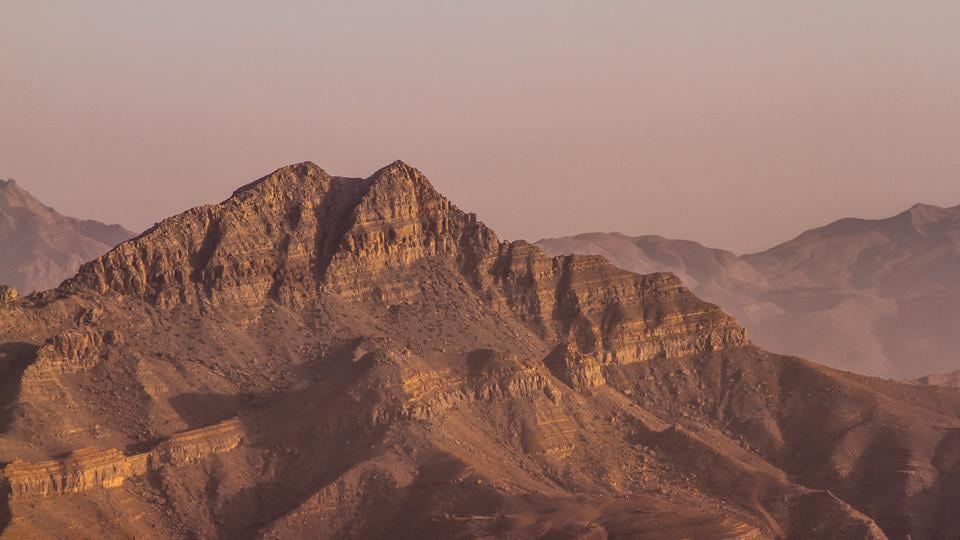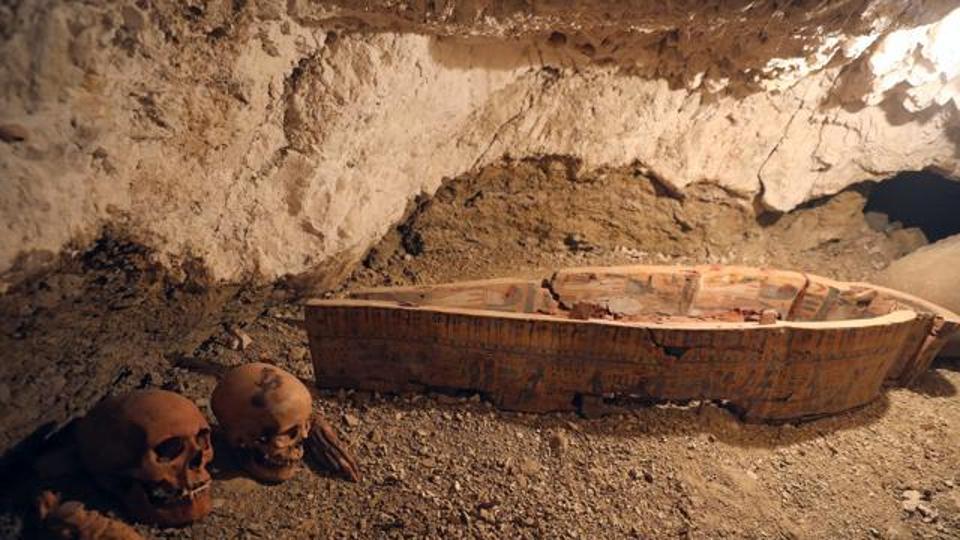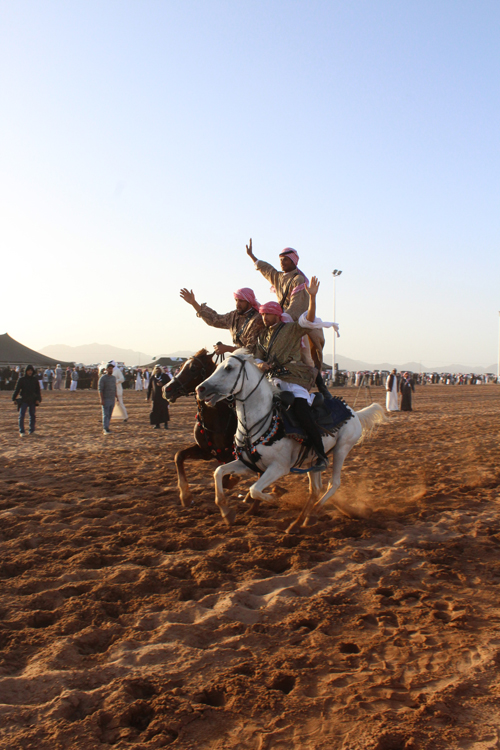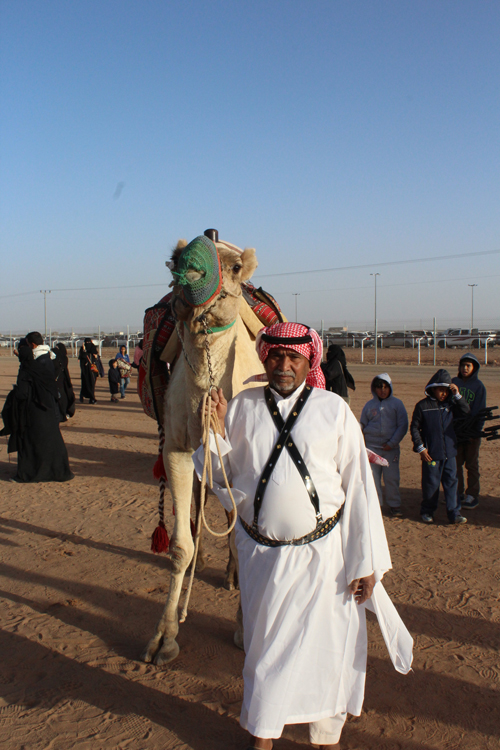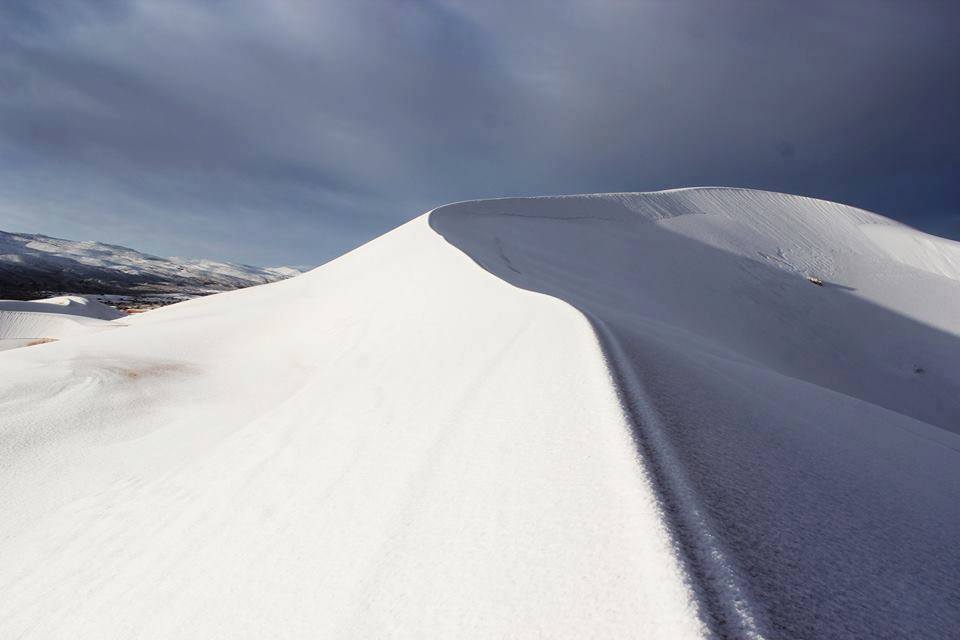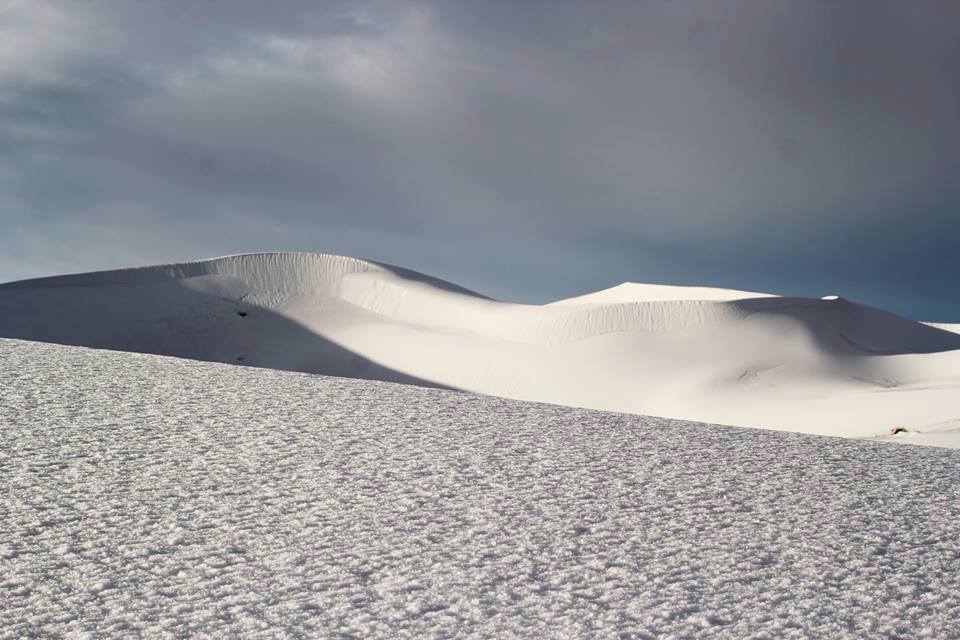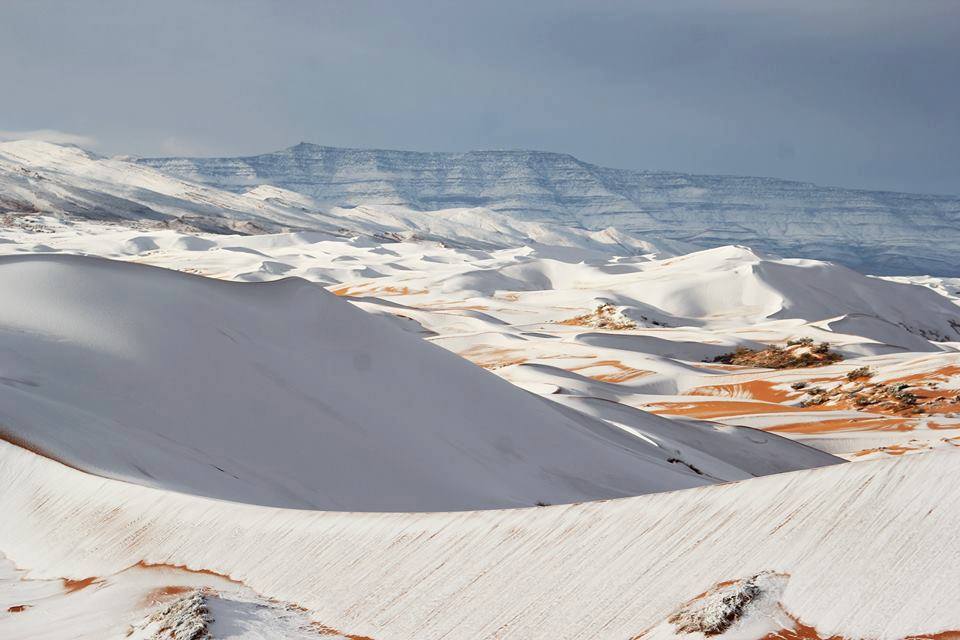Hindustani78
BANNED

- Joined
- Apr 8, 2014
- Messages
- 40,471
- Reaction score
- -47
- Country
- Location
The Imilchil Marriage Festival takes place at Imilchil, which is located high up in the lake plateau of the Middle Atlas Mountains in Morocco. The legendary tale of the Imilchil Marriage Festival says there were two young people who fell in love from enemy tribes. Their family would not allow them to marry. Out of grief, they wept bitterly day and night. These tears created two individual lakes. One lake was "Isli", meaning bridegroom and the other, "Tislit", meaning bride. (Photo: AP)
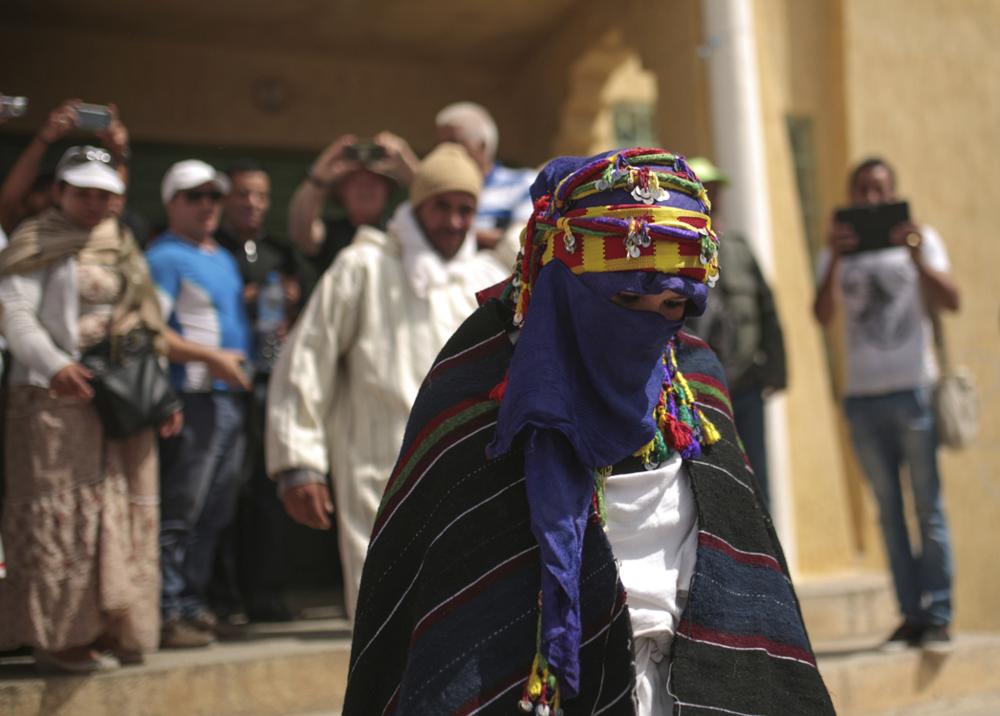
Berber merchants wait for customers at a cattle market during the annual festival of Imilchil. Imilchil is located high up in the lake plateau of the Middle Atlas Mountains in Morocco. (Photo: AP)
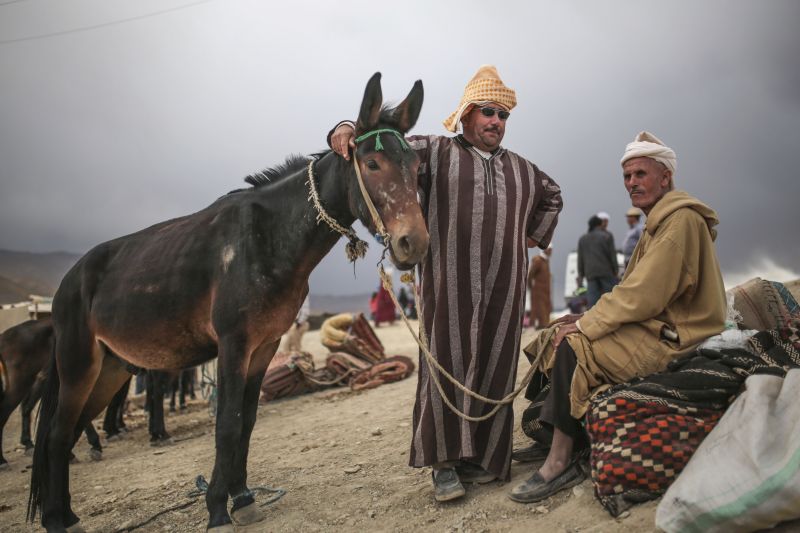
A band plays traditional music to attendees of the annual festival of Imilchil, that takes place in a small village in Morocco's Atlas mountains. What started as an annual marriage festival has become an economic boon for the tiny Berber village tucked into in the foothills of Morocco's Atlas Mountains. Today, the event is arranged to coincide with a large three-day market that marks the end of the harvest season. (Photo: AP)
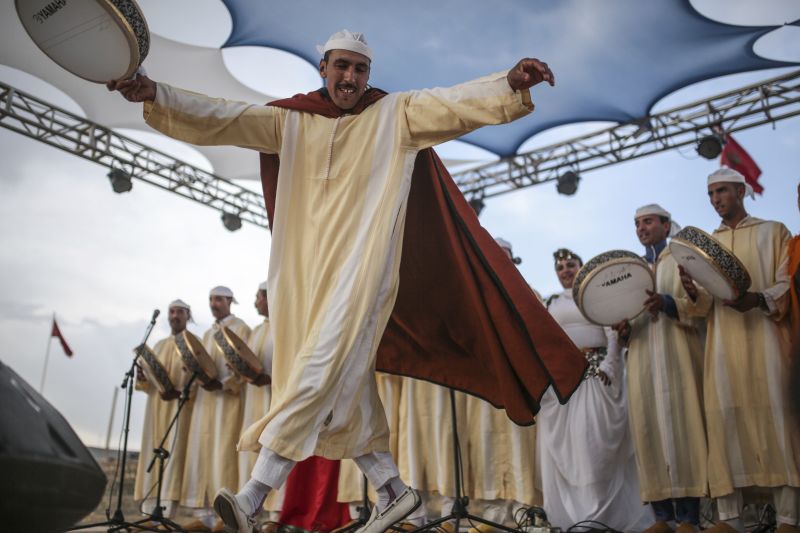
A couple wait to legalize their marriage during the annual festival of Imilchil. The festival primarily sees Berber tribal clans who have a strong sense of culture and tradition that has been preserved for decades. (Photo: AP)
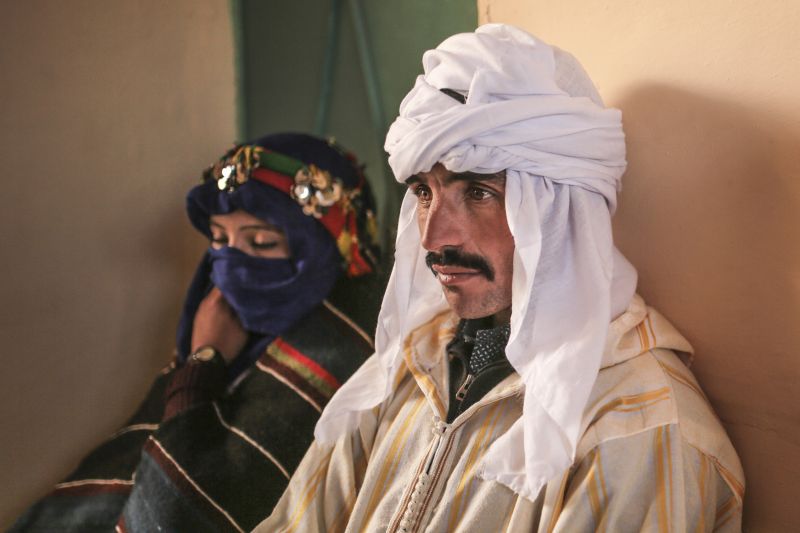
Berber villagers shop for garments at the annual festival of Imilchil, a small village in Morocco's Atlas mountains. Traditionally, a nod and a wink is the unspoken language between men and women at the festival to show interest. Men are usually assisted by a friend in choosing a bride and overcoming any shyness. Once they receive a gesture from a female, if they agree, they may hold hands to show intent. However, letting go of ones hand signals rejection. (Photo: AP)
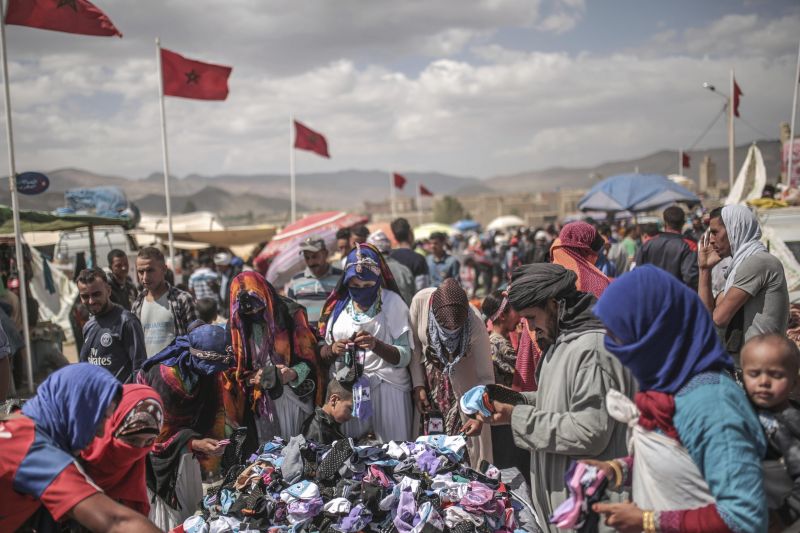
A caretaker cleans outside the mausoleum of Sidi Hmad Mghani, a local saint. According to customs, if a bride says the magic phrase, "you have captured my liver or my liver pines for you", it means that she has found her love. Liver not the heart is considered the location of true love because in Berber culture it is believed that a healthy liver aids digestion and promotes well-being. (Photo: AP)
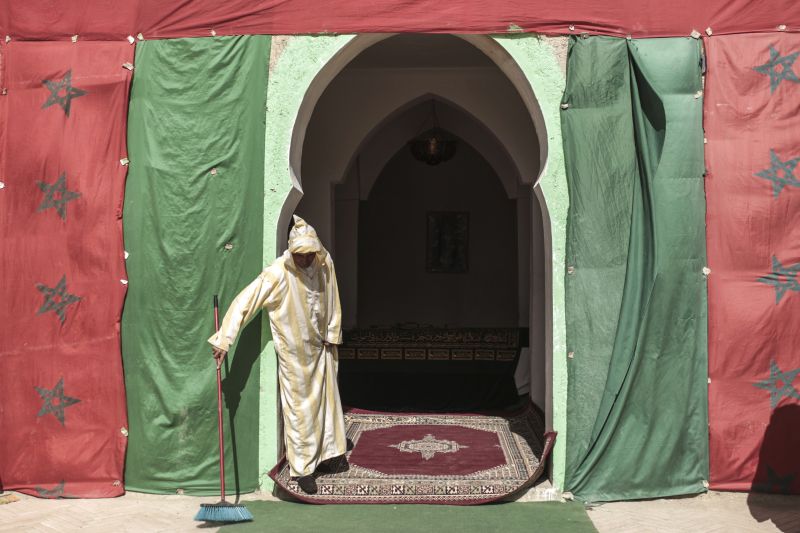
A man seeks a blessing at the mausoleum of Sidi Hmad Mghani. The legendary tale of the Imilchil Marriage Festival says there were two young people who fell in love from enemy tribes. Their family would not allow them to marry. Out of grief, they wept bitterly day and night. These tears created two individual lakes. One lake was "Isli", meaning bridegroom and the other, "Tislit", meaning bride. (Photo: AP)
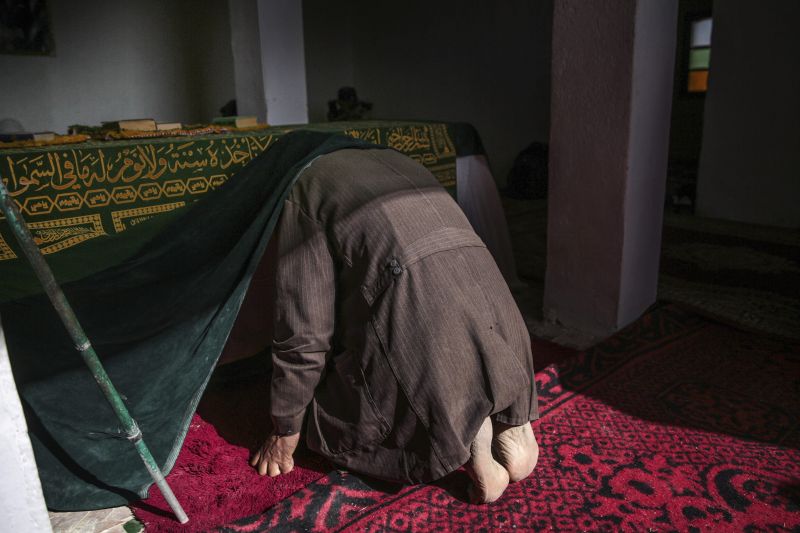
Colorful rugs are put on display for sale at the annual festival of Imilchil. As well as being the place to choose a potential spouse, the Moussem of Imilchil operates as a fair or a big market, with artisans and farmers offering their produce to a wider market than is available at the weekly Souk. (Photo: AP)
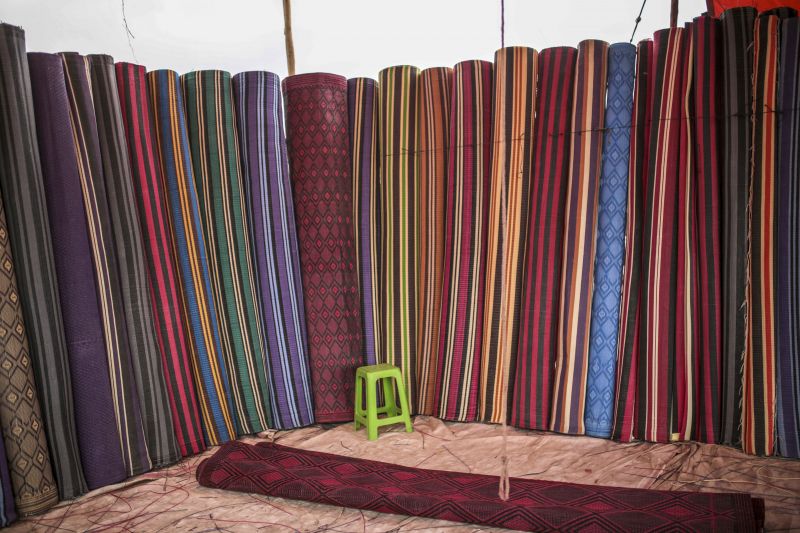
Berber merchants selling utensils wait for customers at the annual festival of Imilchi. (Photo: AP)
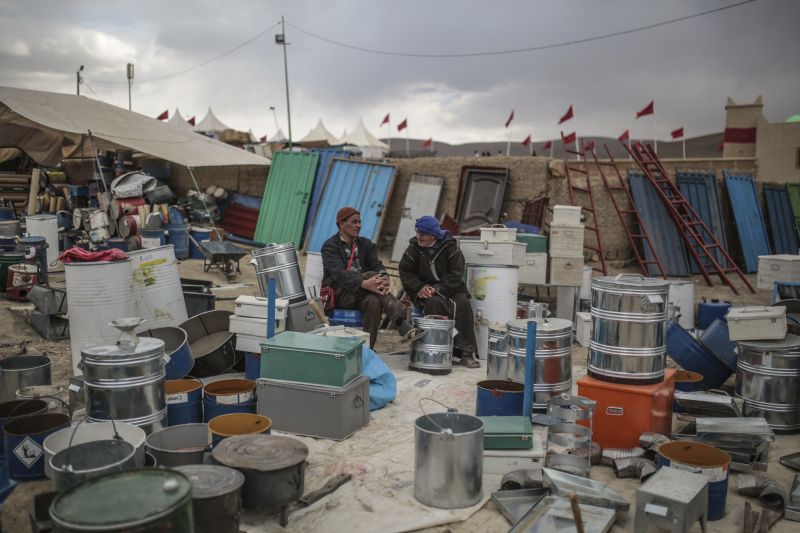
A family drives home after buying good from the annual festival of Imilchil, a small village in Morocco's Atlas Mountains. What started as an annual marriage festival has become an economic boon for a tiny Berber village tucked into in the foothills of Morocco's Atlas Mountains. Today, the event is arranged to coincide with a large three-day market that marks the end of the harvest season. (Photo: AP)
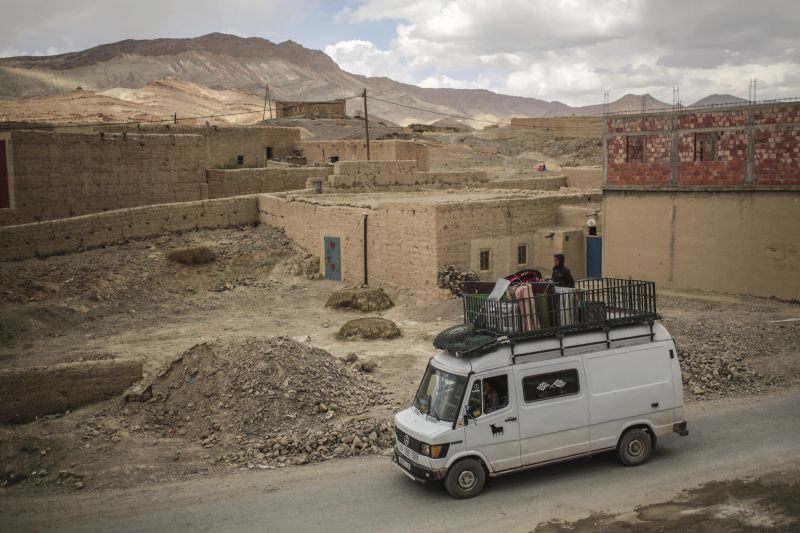

Berber merchants wait for customers at a cattle market during the annual festival of Imilchil. Imilchil is located high up in the lake plateau of the Middle Atlas Mountains in Morocco. (Photo: AP)

A band plays traditional music to attendees of the annual festival of Imilchil, that takes place in a small village in Morocco's Atlas mountains. What started as an annual marriage festival has become an economic boon for the tiny Berber village tucked into in the foothills of Morocco's Atlas Mountains. Today, the event is arranged to coincide with a large three-day market that marks the end of the harvest season. (Photo: AP)

A couple wait to legalize their marriage during the annual festival of Imilchil. The festival primarily sees Berber tribal clans who have a strong sense of culture and tradition that has been preserved for decades. (Photo: AP)

Berber villagers shop for garments at the annual festival of Imilchil, a small village in Morocco's Atlas mountains. Traditionally, a nod and a wink is the unspoken language between men and women at the festival to show interest. Men are usually assisted by a friend in choosing a bride and overcoming any shyness. Once they receive a gesture from a female, if they agree, they may hold hands to show intent. However, letting go of ones hand signals rejection. (Photo: AP)

A caretaker cleans outside the mausoleum of Sidi Hmad Mghani, a local saint. According to customs, if a bride says the magic phrase, "you have captured my liver or my liver pines for you", it means that she has found her love. Liver not the heart is considered the location of true love because in Berber culture it is believed that a healthy liver aids digestion and promotes well-being. (Photo: AP)

A man seeks a blessing at the mausoleum of Sidi Hmad Mghani. The legendary tale of the Imilchil Marriage Festival says there were two young people who fell in love from enemy tribes. Their family would not allow them to marry. Out of grief, they wept bitterly day and night. These tears created two individual lakes. One lake was "Isli", meaning bridegroom and the other, "Tislit", meaning bride. (Photo: AP)

Colorful rugs are put on display for sale at the annual festival of Imilchil. As well as being the place to choose a potential spouse, the Moussem of Imilchil operates as a fair or a big market, with artisans and farmers offering their produce to a wider market than is available at the weekly Souk. (Photo: AP)

Berber merchants selling utensils wait for customers at the annual festival of Imilchi. (Photo: AP)

A family drives home after buying good from the annual festival of Imilchil, a small village in Morocco's Atlas Mountains. What started as an annual marriage festival has become an economic boon for a tiny Berber village tucked into in the foothills of Morocco's Atlas Mountains. Today, the event is arranged to coincide with a large three-day market that marks the end of the harvest season. (Photo: AP)


